Every engineer loves a challenge. For Julien Le Boterff, Lucas Lemarié, Edwin Courtial, and Arthur Colly, a multidisciplinary team of engineers, researchers, and PhD students at the University of Lyon in France, the third edition of the Solvey AM Cup competition was just the opportunity they needed to put their skills to the test.
Sponsored by specialty polymer maker Solvay, with L’Oréal and Ultimaker, AM Cup winners demonstrate the application of high-performance 3D printing to create complex polymer shapes for industry that match or exceed the performance and quality of conventional injection molded parts.
The 2021 AM Cup presented entries with a real-world manufacturing challenge to solve for the L’Oréal factory using 3D printing on an Ultimaker printer and Solvay filament.
“If we can crack the problem using additive manufacturing, we’ll increase production and supply chain agility,” said Matthew Forrester, head of materials transformation & recycling at the L’Oréal Packaging Science Center.
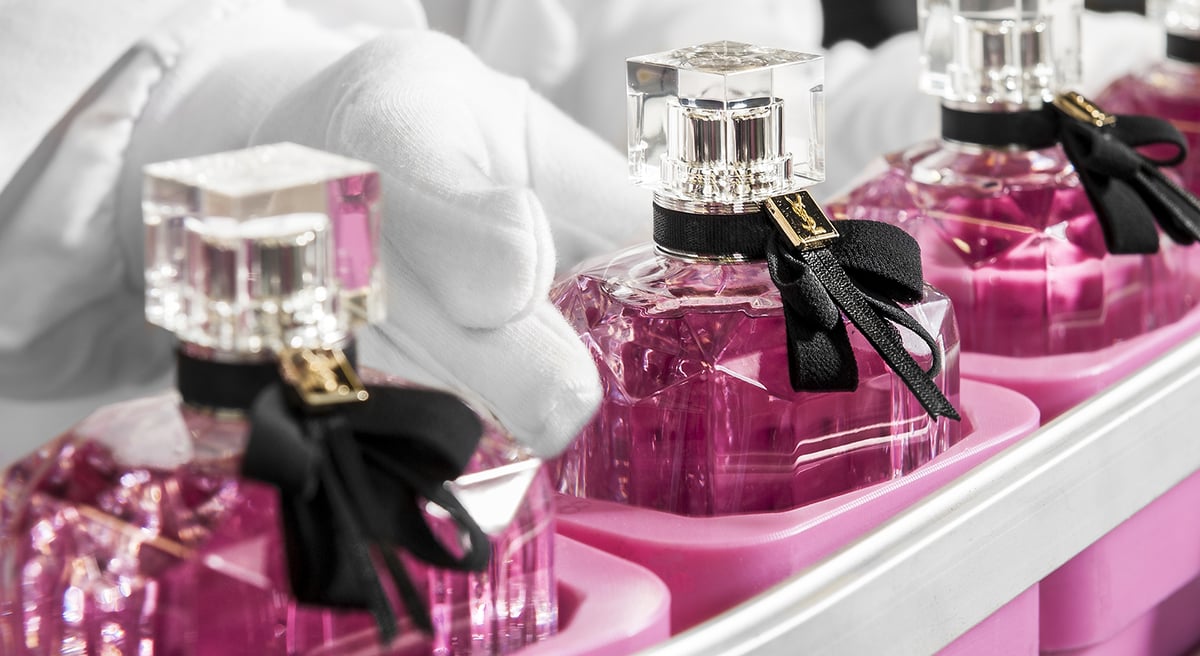
Each of the 54 engineers and teams from 25 universities that entered had to design parts for the L’Oréal perfume production factory that adjust automatically to hold different perfume bottle shapes. The part, technically called a puck, had to ensure bottles could move efficiently, quickly, and quietly around filling lines.
Previously, L’Oréal machined unique parts to hold each bottle shape. However, every time the line changed bottle shape, these parts were removed and replaced with other bottle-specific parts. Could 3D printing be used to create a universal part?
“The most challenging part in our developed puck was to design the retractable blades that are the shape-adaptative parts of the puck,” says Lemarié, a PhD student doing research at Segula Technologies and an assistant engineer at 3d.FAB Platform.
The winning puck design is 3D printed as one piece. In fact, the sturdy base with intricate retractable blades is only manufacturable with 3D printing. Machining or injecting molding could not reproduce the level of detail required to be functional. “We would not be able to make the pucks using machining or injection molding without deconstructing the design into several parts,” says Forrester.
The AM Cup winning design has the potential to eliminate puck changes at L’Oréal’s factories greatly reducing time, labor, and increasing efficiency.
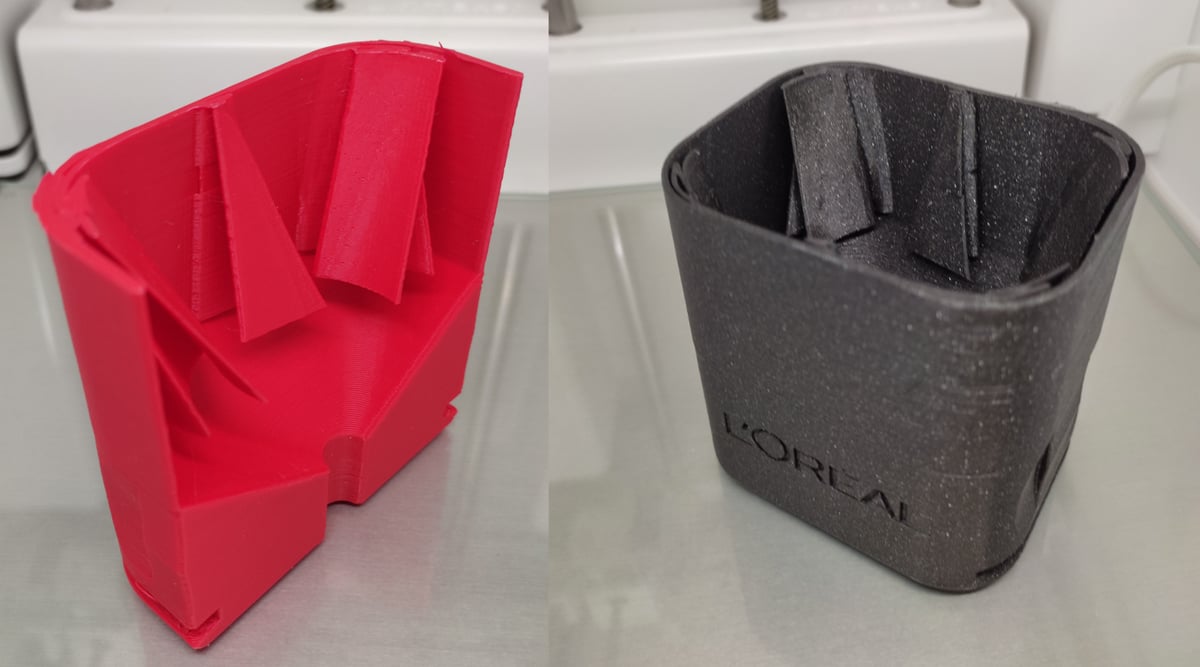
Developing the Innovative Design
The team went down several design paths and iterations before landing on the winning concept. “At the beginning, we started with auxetic structures that have a negative Poisson’s ratio, which are well known in 3D printing for various application cases, such as soft robotic hands to catch an object,” says Le Boterff, 2021 AM Cup team leader of and research engineer at 3d.FAB Platform. Ultimately this first approach proved not relevant, but it inspired the concept behind the final design, which was a success for maintaining the bottles in the puck.
Another challenge was noise. Several hundred parts are used per line, which means noise generates as they accumulate on conveyor belts. As a secondary objective, the part had to integrate either an existing or innovative solution to absorb the shock between parts and avoid excessive noise levels.
“From the beginning, we considered the noise problem as a secondary criterion,” says Lemarié. “We focused our development on the retractable blades to fit all the bottles, then, based on the optimal design, we added a simple and yet effective noise reductive system.”
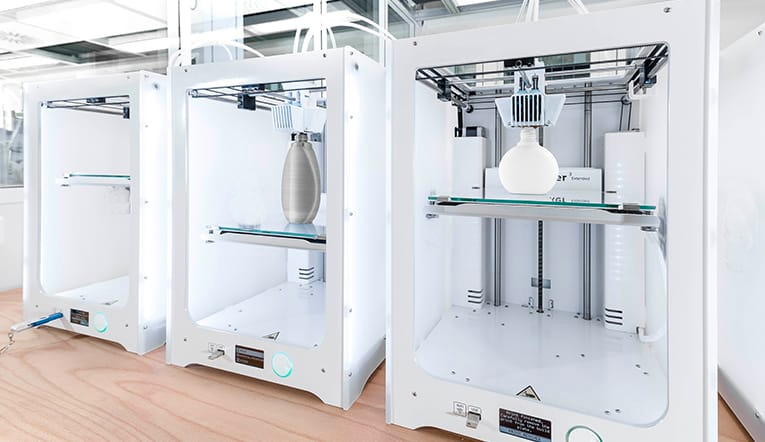
Additive Manufacturing at L’Oreal
L’Oréal is no stranger to additive manufacturing and the benefits it delivers to factory production. The company says its move to incorporate more 3D printed factory tools and some 3D printed consumer products meets their goals for agility, environmental responsibility, and shifting consumer needs.
“We have 3D printing hubs that enable us to produce tens of thousands of parts every year to accelerate the time to market of new packaging developments,” says Forrester. L’Oréal created its own recycled materials for in-house 3D prototyping.
Although prototyping remains the company’s largest use of 3D printing, recently L’Oréal 3D printed limited edition consumer packaging and is increasingly applying additive manufacturing as a solution in its factories, says Forrester.
“The 2021 winning design will be tested within our plants to replace the existing solutions, where we use a mix of machining and additive manufacturing,” says Forrester. The company will assess the performance, but expects it will lead to ergonomic improvements for our operators, and ideally an optimization of changeover time. “Being able to react as quickly as possible to fluctuating demands is critical in today’s market.”
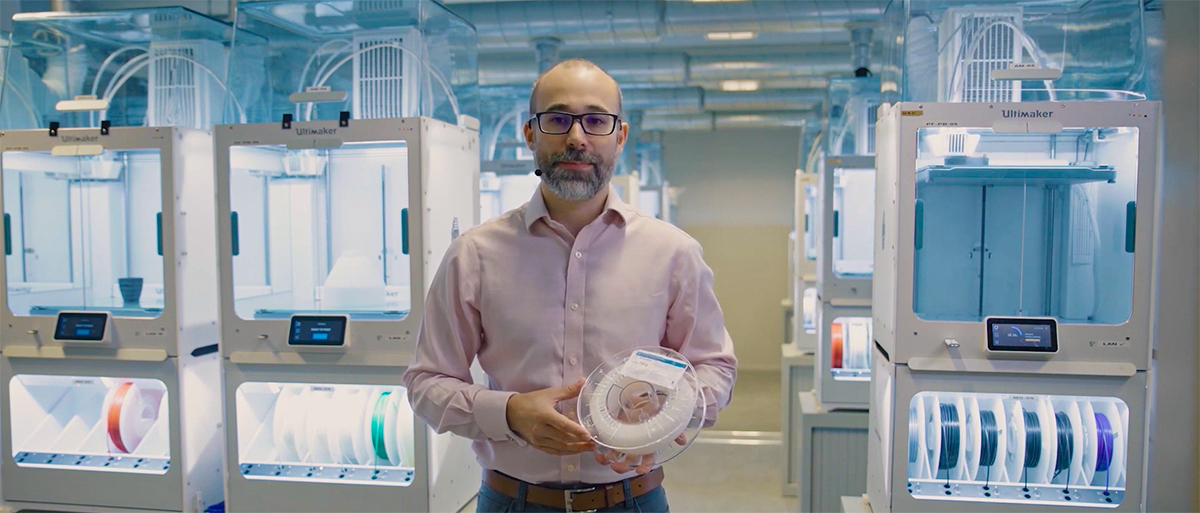
Printers and Materials
Ultimaker joined as an AM Cup sponsor to demonstrate the manufacturing and industrial capabilities of their 3D printers. Far more often seen on factory floors than hobby rooms, Ultimaker 3D printers boast an ecosystem of hardware, software, materials that can adapt to nearly any professional application.
“Within our academic platform at 3d.FAB [at the University of Lyon], we are equipped with other printers that are easy to use, but the catalogue of usable materials is quite limited,” says Courtial, a research engineer at CNRS, the French national research center. “We never had the opportunity to print with an Ultimaker.”
Due to Covid, Ultimaker organized for the finalists’ designs to be printed by experts at the Ultimaker print farm and the winner of the contest would be receiving an Ultimaker 2+ Connect.
Chemical giant Solvay provided the industrial speciality materials. Solef PVDF filament was an ideal match for this application, says Brian Alexander, the Solvay’s manager of new business development, “because it’s both easy to print and has high chemical and wear resistance.”
Solvay’s portfolio of 3D printing materials also comprises KetaSpire polyetheretherketone (PEEK) and Radel polyphenylsulfone (PPSU) filaments, which include medical and carbon fiber filled grades.
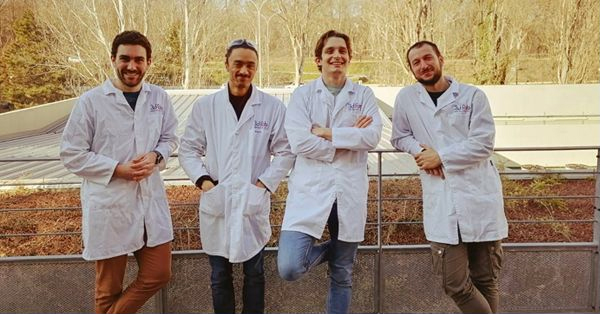
Solvay AM Cup 2023
Winners of the 2021 AM Cup sponsored by Solvay were announced on Jan. 27 in a virtual ceremony. The winning team, selected by an international jury, received €5,000 to be reinvested in academic, societal, or entrepreneurial activities and an Ultimaker 2+ Connect printer.
“We are very proud that the results of our whole team effort will contribute in a relevant way within the L’Oréal facilities,” says Colly, a PhD student working at Elkem Silicones and 3d.FAB.
The Second place winner was Kevin Dechamps, a parametric design consultant in France. Third place went to a team from Thomas More University in Belgium called The Filamonkies: Koen Geyskens, David Caluwaerts, Thomas Claus, Simon De Haas, Tristan Dhaene, Seppe Lambregt, Melvin Lauwers, Tristan Michielsen, Colin Strooybants, Robin Van Cleemput, Robbe Van den Bergh, and Tom Van Eyck.
Interested in entering the AM Cup 2023. Stay tuned to Solvay for details.
License: The text of "New 3D Printing Tools for Production Line Agility at L’Oréal" by All3DP Pro is licensed under a Creative Commons Attribution 4.0 International License.